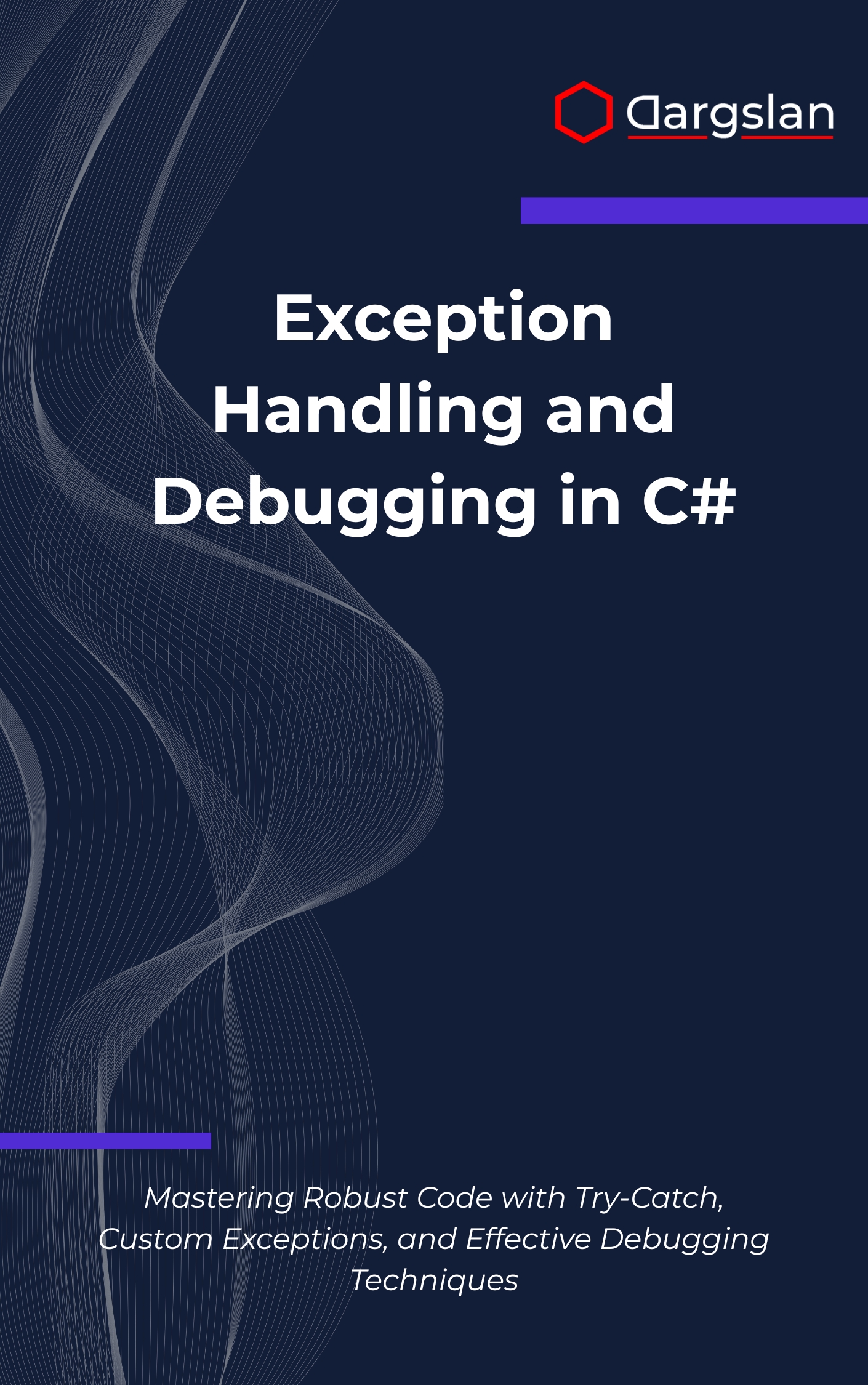Exception Handling and Debugging in C#
Exception Handling and Debugging in C#,Debug and handle errors in C# applications using try-catch and logging best practices.

When your C# applications meet real-world complexity—distributed services, async workflows, and unpredictable inputs—errors are inevitable. The difference between fragile and resilient software is how you design for failure. This book shows you how to turn exceptions into actionable signals, accelerate debugging, and deliver smoother user experiences without guesswork.
Mastering Robust Code with Try-Catch, Custom Exceptions, and Effective Debugging Techniques
Overview
Exception Handling and Debugging in C#: Mastering Robust Code with Try-Catch, Custom Exceptions, and Effective Debugging Techniques is a practical IT book, programming guide, and technical book for C# developers who want production-grade reliability. It reframes error handling as a proactive design practice, not an afterthought. You’ll learn how to create predictable flows, surface meaningful diagnostics, and build systems that fail gracefully under pressure.
From fundamentals to advanced scenarios, the book covers essential C# patterns with clarity and depth. It integrates modern tooling and patterns, including Visual Studio insights, structured logging, and testable exception paths. You’ll master both the language features and the engineering mindset that drive robust applications.
You’ll explore ["Exception handling fundamentals","Try-catch-finally blocks","Custom exception creation","Global exception handling","Visual Studio debugging tools","Stack trace analysis","Asynchronous code debugging","Logging frameworks integration","Unit testing exception scenarios","Error handling in web applications","Desktop application exception management","Centralized error handling systems","Production debugging techniques","Exception handling best practices","Crash report analysis"] and learn when—and why—to apply each in real projects. With clear examples and actionable checklists, you’ll reduce mean time to resolution, improve observability, and design safer APIs and UIs from the start.
Who This Book Is For
- C# developers and career changers who want confidence handling errors under real constraints. You’ll strengthen your understanding of try-catch-finally, safe rethrowing, guard clauses, and defensive coding without swallowing critical signals.
- Backend, API, and cloud engineers aiming to standardize error responses and diagnostics. You’ll learn global exception handling, logging frameworks integration, correlation IDs, and consistent patterns that make services easier to support and scale.
- Tech leads and architects seeking a unified, team-wide approach to reliability. Use this guide to establish exception policies, reduce noise, prioritize observability, and inspire a culture that treats failures as learnable events.
Key Lessons and Takeaways
- Design an intentional exception strategy across your solution. Build a clear exception taxonomy, craft meaningful custom exceptions, and implement global handling that protects user experience while preserving actionable diagnostic detail.
- Level up your debugging effectiveness in Visual Studio. Use targeted breakpoints, call stack navigation, watch windows, and stack trace analysis to isolate issues faster—and pair them with logging that’s structured, queryable, and production-safe.
- Handle asynchronous and multi-threaded complexity with confidence. Learn how async/await surfaces exceptions, manage cancellation and unobserved exceptions, write unit testing exception scenarios, and codify production debugging techniques that shorten time to fix.
Why You’ll Love This Book
It combines clarity with depth: step-by-step walkthroughs, hands-on patterns, and real-world examples you can drop into your codebase today. Instead of abstract theory, you’ll find practical guidance on error messages, crash report analysis, and stack trace triage that speeds up diagnosis without overwhelming logs or users.
The content spans web APIs, services, and desktop application exception management, so you’ll gain a cohesive toolkit for diverse environments. With concrete best practices, anti-patterns to avoid, and performance-aware tips, you’ll move from reactive bug-chasing to a proactive reliability mindset that scales with your team and product.
How to Get the Most Out of It
- Read progressively: start with core concepts like try-catch-finally blocks and exception handling fundamentals, then layer in custom exception creation, global exception handling, and centralized error handling systems as your architecture matures.
- Apply techniques in small increments to current projects. Add structured logging, improve error messages, and standardize web API responses; then validate each change by inspecting stack traces, comparing before/after crash report analysis, and measuring time-to-diagnose improvements.
- Build mini-projects to reinforce learning. For example: implement a global handler in an ASP.NET Core API with correlation IDs; instrument a desktop app with user-friendly dialogs and safe retries; write unit testing exception scenarios for edge cases and asynchronous code debugging.
Get Your Copy
If you’re ready to ship resilient features, cut guesswork in production, and give your users a smoother experience, this guide belongs on your desk. Equip yourself—and your team—with patterns that stand up to real-world complexity.




